In 2016 Simon Moore mounted a collection of c. 70 Alizarin transparencies in glass battery jars for a future display at UCL’s Grant Museum
of Zoology in London.
These preparations show the internal skeleton of vertebrates actually in situ in the specimens.
The skeleton is stained with alizarin dyes (usually red) as it is calcium specific and is only is taken up by the bones.
The preserved specimens are often skinned or de-scaled prior to maceration in either an enzymatic solution or (cheaper) 5% potassium
hydroxide solution until the tiniest bones are visible. The skeleton is then stained with the dye and taken through (gradually) into glycerine
solutions of increasing concentration.
These preparations are extremely fragile, so mounting them by sewing them to glass plates is quite challenging!
Sometimes, limbs become detached during the process and have to be re-attached by using specially prepared glass needles.
Glass is best as it does not react with anything in the jar and is almost invisible so that it does not interfere with the display.
A number of specimens is shown below including some larval amphibians attached with a special gelatine solution and a photo of Simon
wrestling with a slippery specimen and pushing the monofilament attaching threads through specially finely-drilled holes in the glass backing plate.
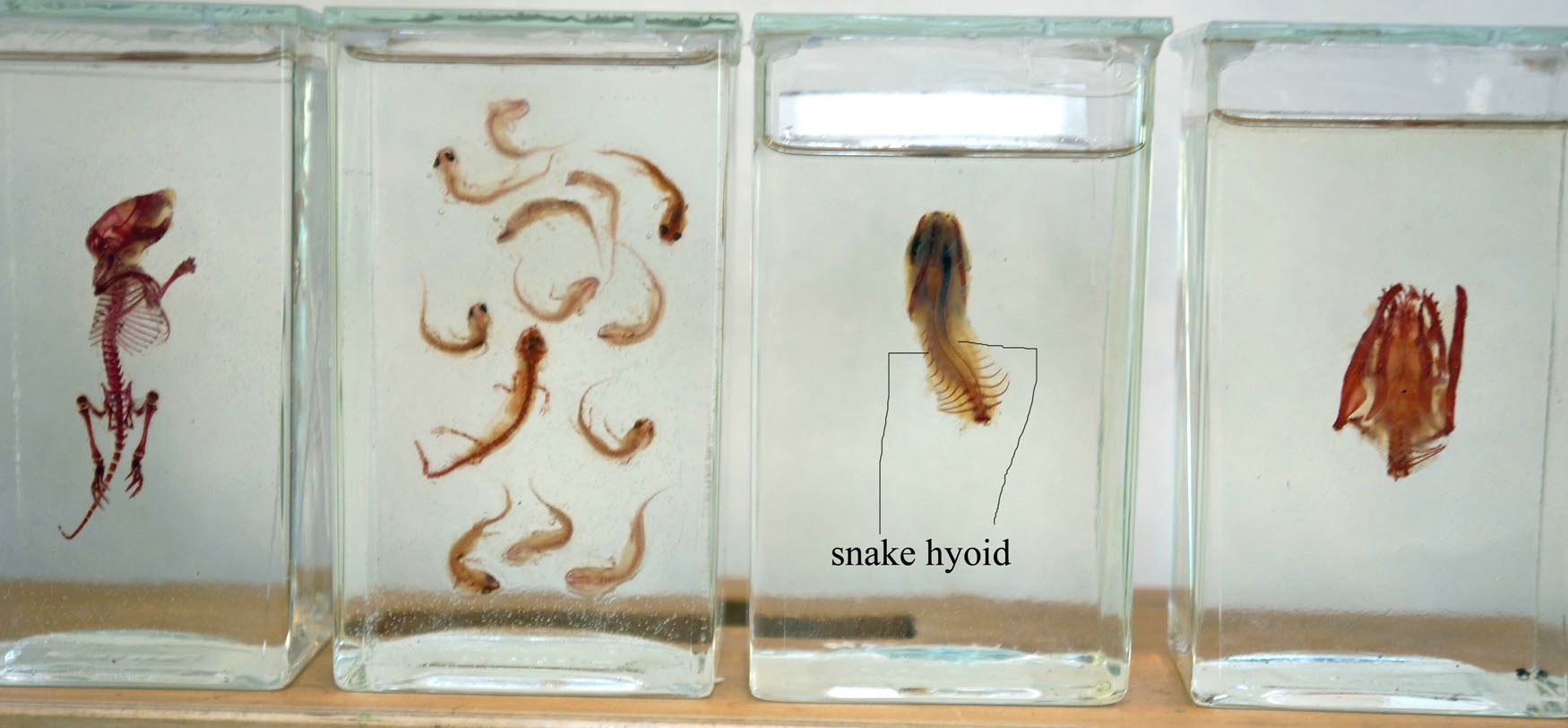
Above, left to right: Vole; Larval amphibians; Snake head (hyoid); and Snake head.
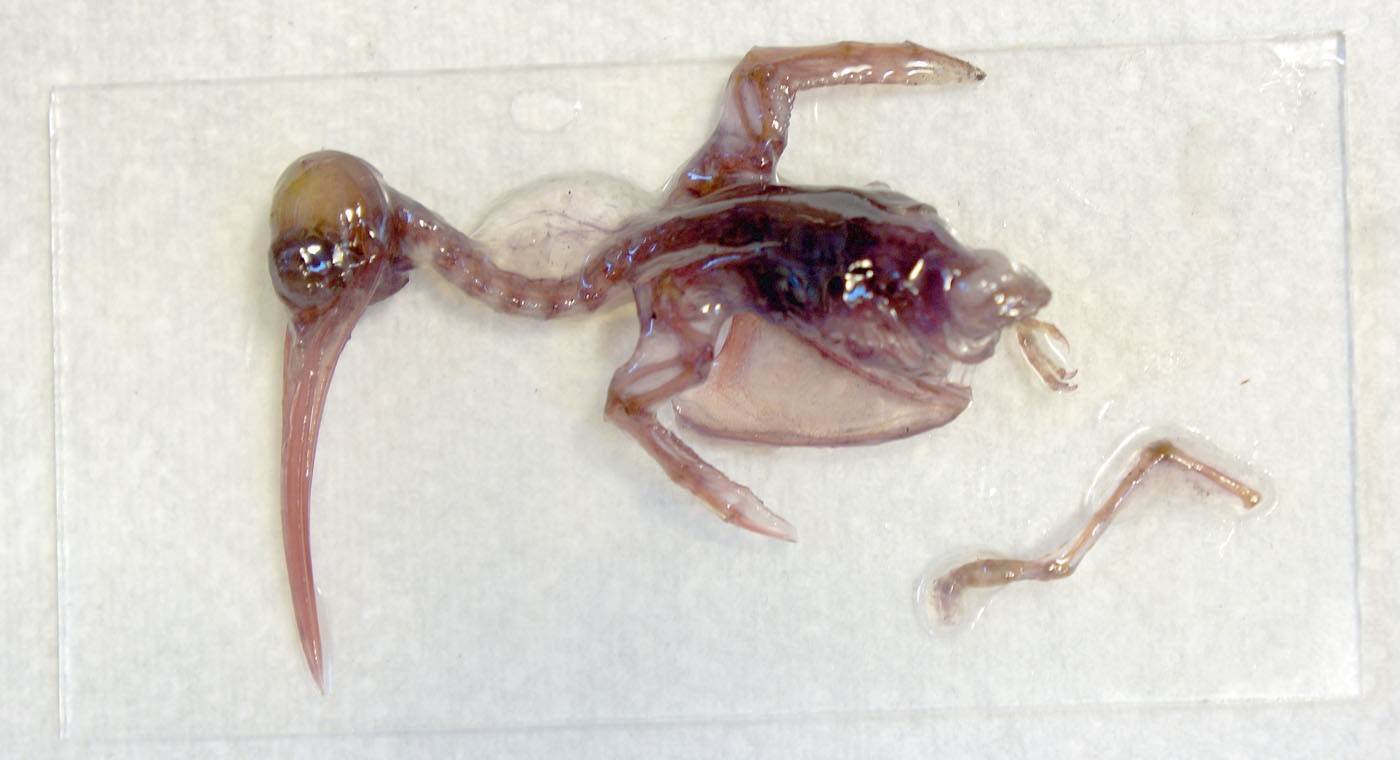
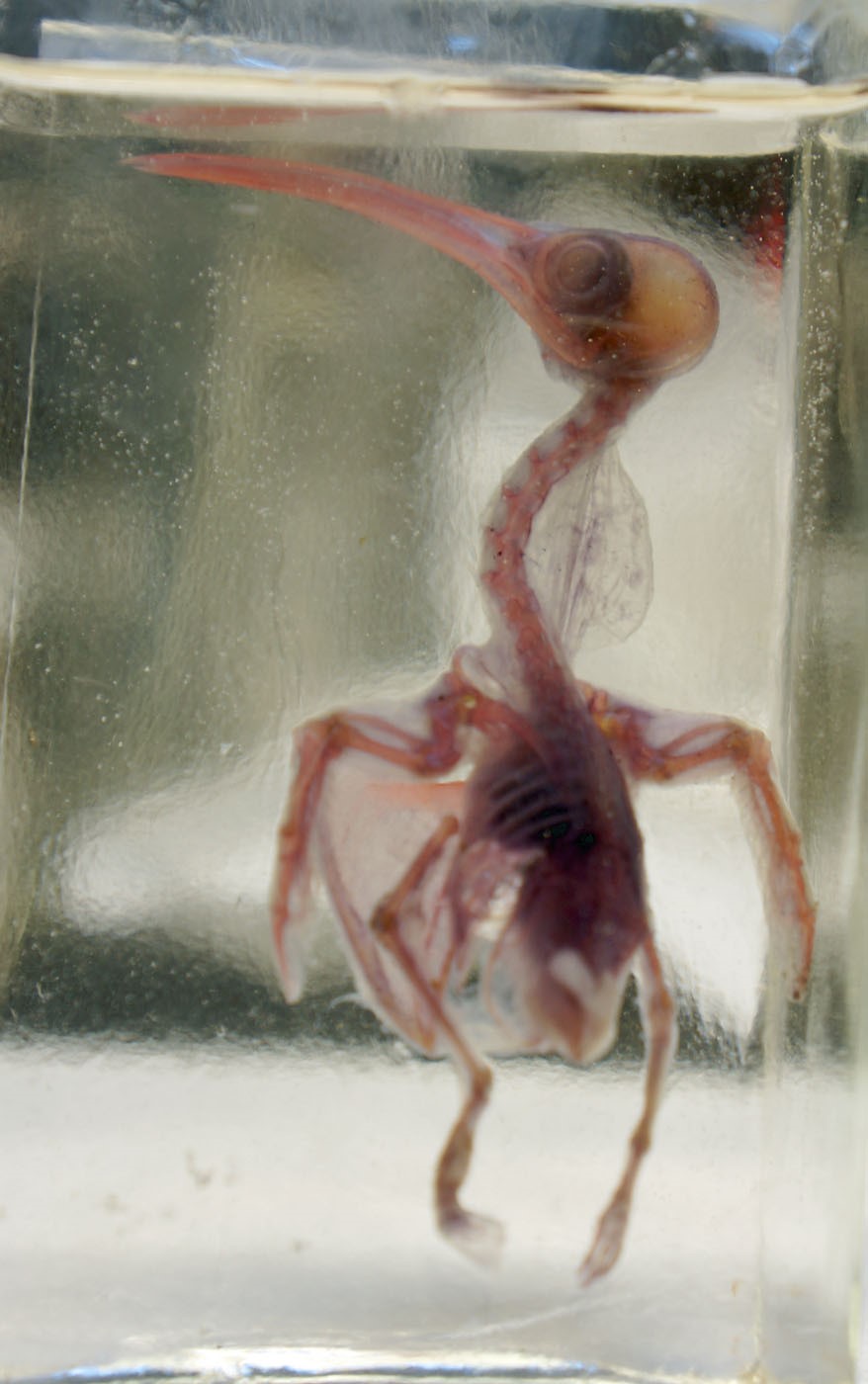
Above left: Curlew chick with detached limb. Above right: with limb re-attached using glass needle.
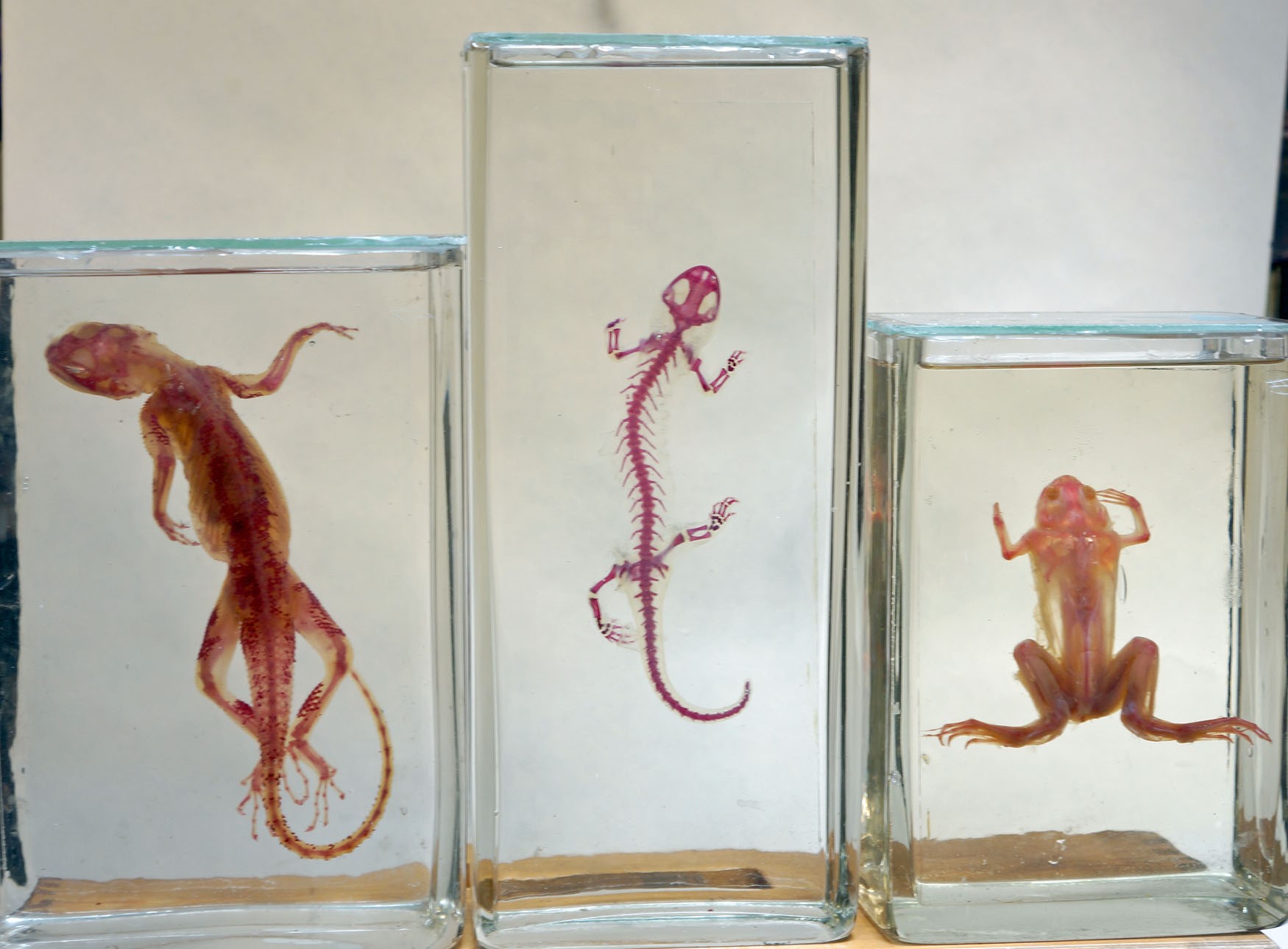
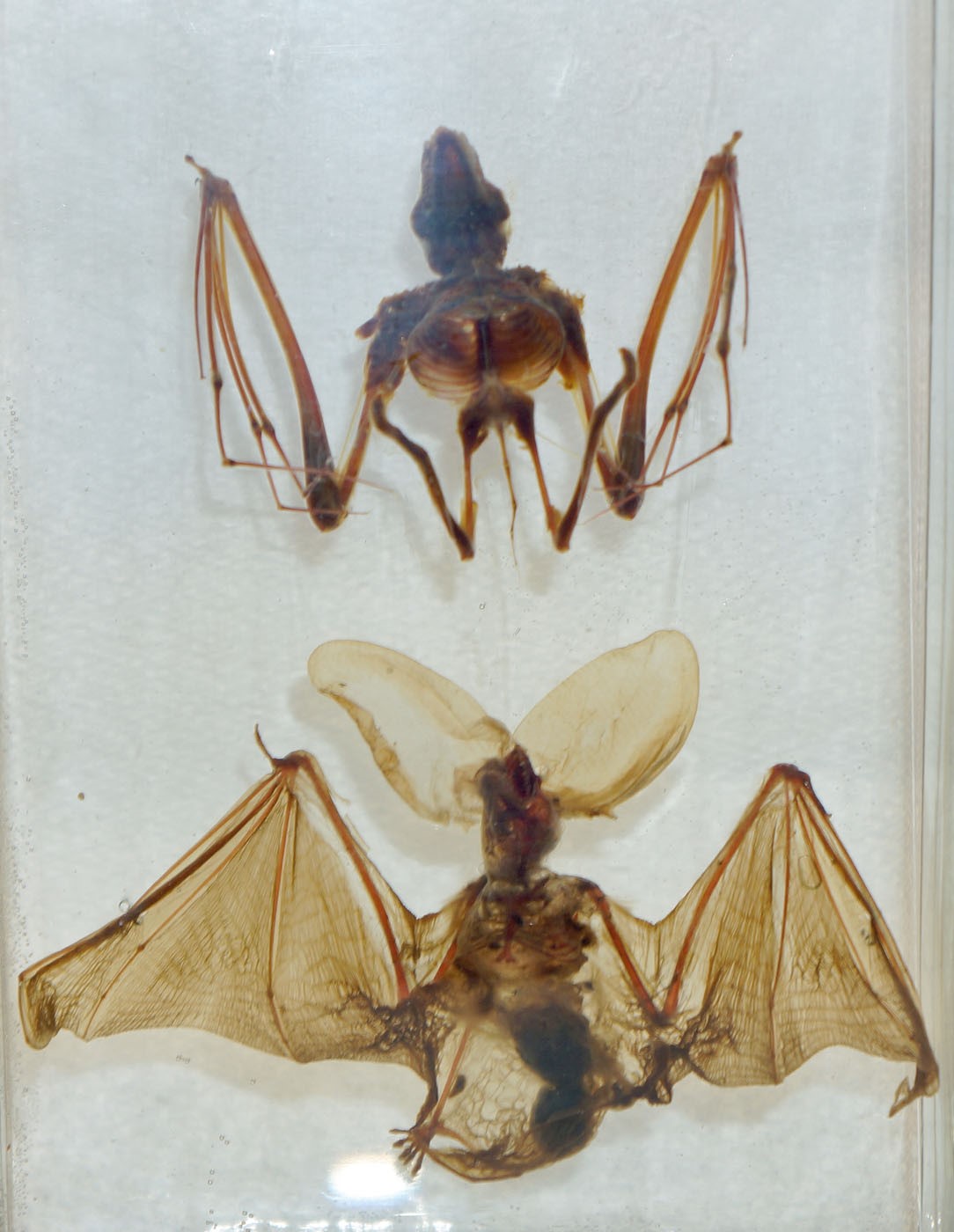
Above left: left to right, a Lizard, a Salamander and a Frog. Above right: Two bats – the upper minus most of its skin.
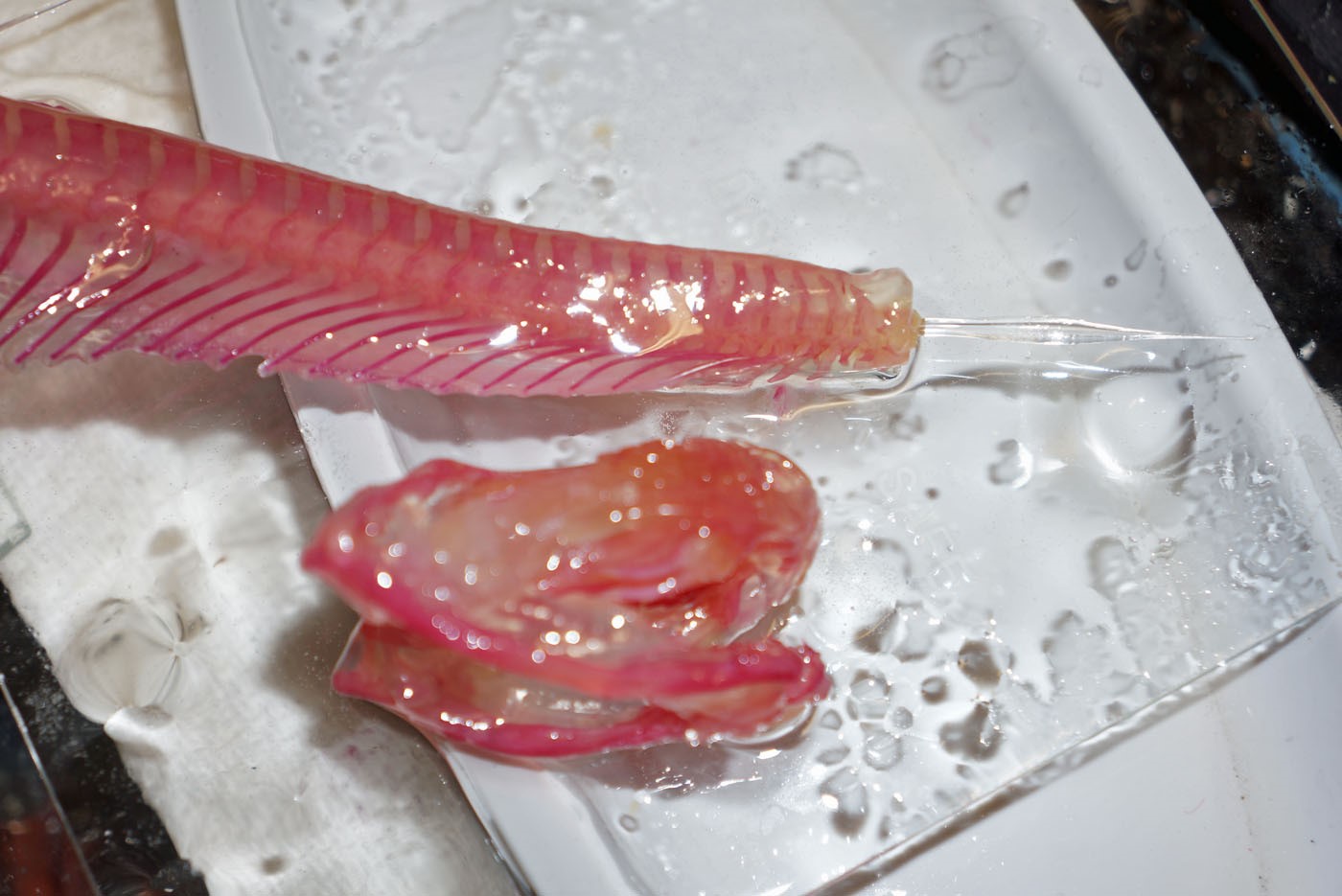
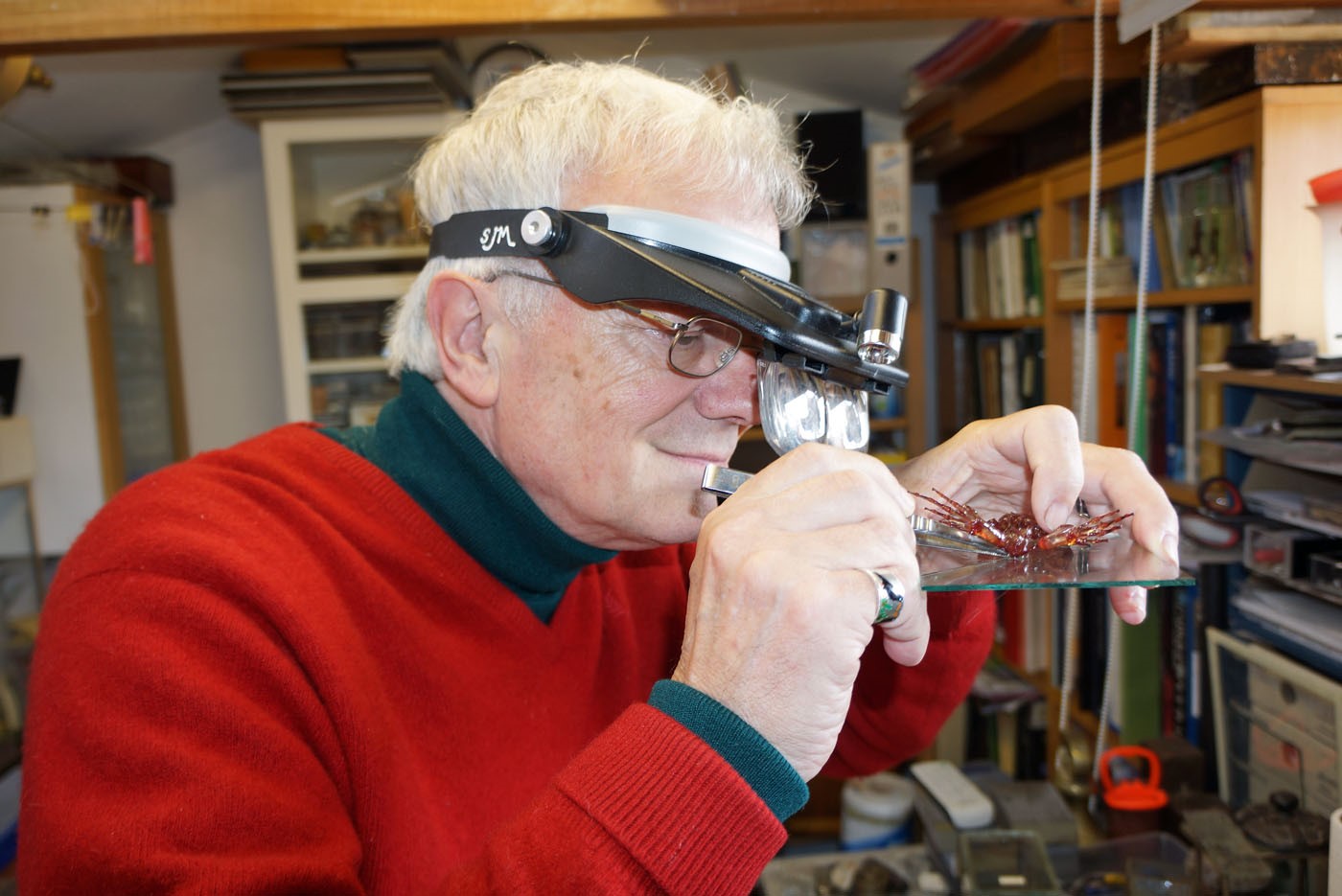
Above left: a detached rattlesnake head about to be re-attached with glass needle. Above right: Simon Moore wrestling with a slippery specimen and pushing the monofilament attaching threads through specially finely-drilled holes in the glass backing plate.
For more details about what we can do for you, or for a quote, please contact:
enquiries@natural-history-conservation.com
We are members of the United Kingdom Institute for Conservation of Historic and Artistic Works